| National tangible cultural property exhibits Wajima Lacquerware Museum |
日本語 >> |
|
|||||
The Wajima Lacquerware Museum is the only facility of its kind in Japan and has 3804pieces in storange and on display that include pieces that have been recognized as national tangible cultural properties and the traditional tools of the lacquerware craftsmen. Please enjoy the exquisite beauty and unparalleled techniques of historical craftsmanship in the town. The history of Wajima-nuri These are number of theories as to how urushi production started in Wajima but as yet none of them have been confirmed. Vessels that contain locally found powder mixed in with the urushi undercoating have been discovered in a number of local excavations which date back to medieval times. Form evidence found in the small number of handed down texts that have survived the centuries, it is thought that urushi was being produced in Wajima in the Muromachi Period(1333-1573). Important factors in the development of urushiware production are both the local abundance of readily available materials such as Noto cypress, zelkova, urushi trees and Wajima Jinoko powder and the area's favorable climatic conditions. Wajima was historically a port of call on a major sea route which made it convenient for the transportation of materials and goods. This way probably an important contributing factor to the local development of the industry. However, the fact that the people involved in the production and distribution of urushiware had such pride in their work, and that the level of the techniques were continuously being honed, are probably the most important factors in ensuring that tradition has been passed down successfully to the present day. The history of the wajima lacquerware museum Although the history of wajima-nuri dates back to the momoyama period, the durable and elegant standard wajima-nuri production technique that is used today is thought to have been developed in the early edo period. As wajima-nuri was sold by traveling salesman all over the country there has been some anxiety over the scarcity of historically important pieces that remain in the town. However in the establishment of the wajima sikki kaikan, the history of wajima-nuri became represented through the understanding and cooperation of the people involved in the industry. Thanks especially to the passion and efforts in actively collecting pieces by one of the early curators, Mr., hoshino jonosuke, it was first opened to the public as a museum in 1971. The exhibits on show are a proud reminder of the importance of wajima-nuri in Japan. In 1977 the museum was granted National tangible cultural property status and in order to store and preserve the collection it received government funding for a repository to be built. In the future, the museum remains committed to a continuing contribution to the long-term prosperity of the wajima-nuri industry through further consolidation of the collection. Total collection of exhibits: Number of production tools: 2557 Number of everyday tools of craftsman: 45 Number of manufactured pieces: 1142 Number of marketing tools: 60 Total: 3804 We reserve the right to periodically change some of the work and tools on display at the museum. |
||
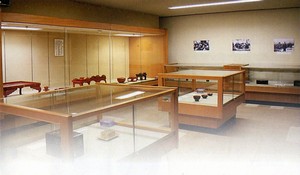 |
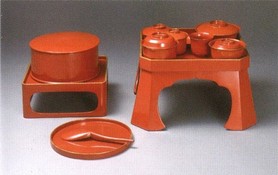 |
||
| We reserve the right to periodically change some of the work and tools on display at the museum. | |||
| Wooden Substrates The shape of the wooden substrate differs according to its purpose and the industry is divided into trades in which craftsmen who have mastered the necessary specialist techniques work. Certain woods are more suited to certain shapes and the correct choice of wood for each shape is another important part of the production process. Whichever kind of wood is chosen, it needs to be dried for three to five years after the tree has been felled before it can be used. |
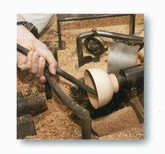 |
||
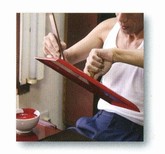 |
Lacquering Wajima-nuri has a characteristic lacquering method. It is known as hon-kataji and is a traditional technique of undercoating. Wajima has remained steadfast in keeping to this method and through continuing research has strived to achieve the highest quality possible in urushi-ware. It has become the standard in Wajima lacquering. |
||
| Decorative Techniques One of the most important factors that give both durable and elegant wajima-nuri its character is the beauty of the decorative techniques of maki-e and chinkin. With their harmonized colour schemes they add a new dimension of aestheticism to urushiware. |
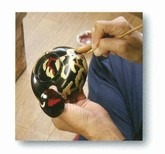 |
||
| Wajima Lacquerware Cooperative Association・ Wajimanuri Kaikan Post code:928-0001 Ishikawa Ken, Wajima Shi, Kawai Machi, 24-55 TEL(0768)22-2155 http://www.wajimanuri.or.jp/ |
||||